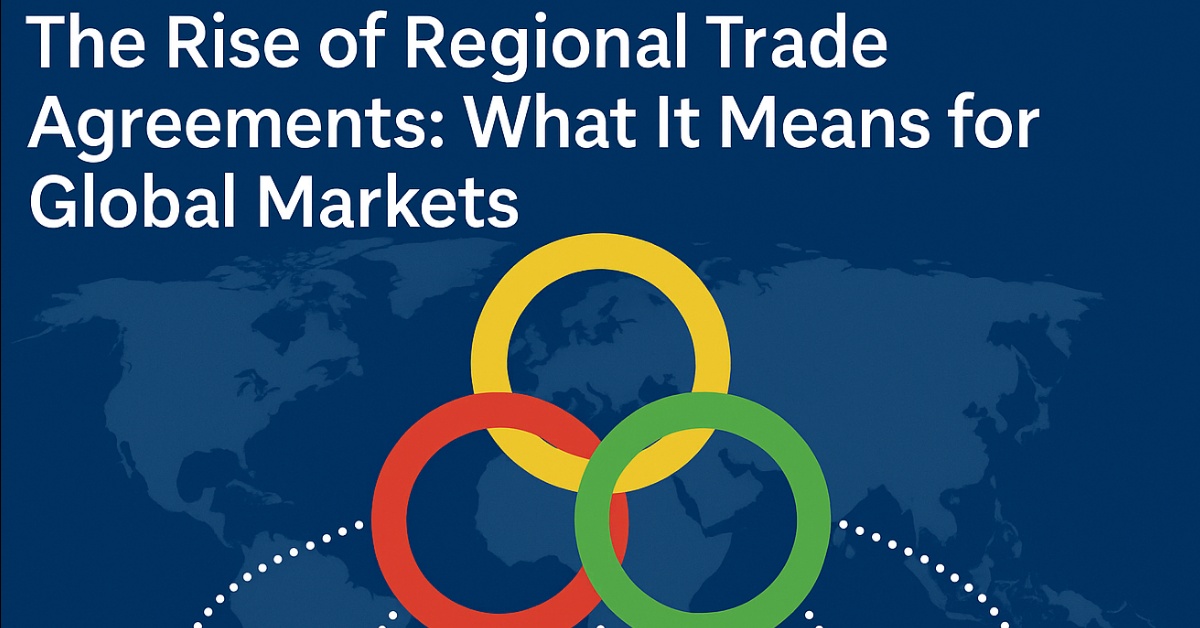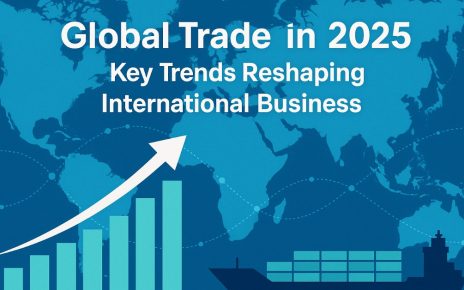In an increasingly interconnected yet fragmented global economy, Regional Trade Agreements (RTAs) are becoming a powerful force shaping the future of international commerce. While multilateral trade negotiations under the World Trade Organization (WTO) have stalled in recent years, countries are actively pursuing regional pacts that redefine economic boundaries and influence global supply chains.
As of 2025, there are more than 350 active RTAs, ranging from bilateral deals to large multilateral frameworks. These agreements are not just about reducing tariffs; they also address investment rules, labor standards, environmental protections, digital trade, and geopolitical strategies. Let’s explore how these RTAs are transforming global markets.
1. What Are Regional Trade Agreements (RTAs)?
RTAs are treaties between two or more countries in a specific region to facilitate trade and economic cooperation. Unlike global trade agreements that aim for universal standards, RTAs are more flexible and tailored to the needs of participating nations.
There are different types of RTAs:
Free Trade Agreements (FTAs): Eliminate tariffs and quotas between member countries.
Customs Unions: Establish common external tariffs.
Common Markets: Allow free movement of goods, services, labor, and capital.
Economic Unions: Combine economic policy coordination with a common market.
Examples include:
The European Union (EU)
The United States–Mexico–Canada Agreement (USMCA)
Regional Comprehensive Economic Partnership (RCEP)
African Continental Free Trade Area (AfCFTA)
2. Why RTAs Are on the Rise
Several factors are driving the surge in regional trade agreements:
a. Geopolitical Shifts
Tensions between global powers like the U.S., China, and Russia have made global trade less predictable. RTAs offer more stable and politically aligned alternatives for countries seeking trade certainty.
b. Supply Chain Realignment
COVID-19 and the war in Ukraine disrupted global supply chains. RTAs help countries build resilient and diversified supply networks, often closer to home.
c. WTO Paralysis
With decision-making gridlocked at the WTO and its appellate body effectively paralyzed, countries are turning to regional forums for faster, more pragmatic trade solutions.
d. Economic Integration Goals
Developing nations use RTAs as tools for regional development, investment attraction, and infrastructure integration, especially in Africa, Southeast Asia, and Latin America.
3. Major RTAs Shaping Global Markets
a. RCEP (Asia-Pacific)
Launched in 2022, RCEP is the largest trade bloc, covering 15 countries including China, Japan, South Korea, Australia, and ASEAN nations. It represents about 30% of global GDP and population. RCEP simplifies rules of origin and promotes intra-Asian trade, reducing dependency on Western markets.
b. AfCFTA (Africa)
The African Continental Free Trade Area unites 54 nations and creates a single market of 1.4 billion people. Its potential impact includes reducing poverty, increasing industrialization, and enhancing intra-African trade, which historically has been under 20% of total trade.
c. USMCA (North America)
The USMCA modernized NAFTA with new digital trade, environmental, and labor clauses. It ensures stronger North American integration, especially in automotive manufacturing and agriculture.
d. EU (Europe)
Beyond being a single market and customs union, the EU has signed multiple RTAs with other countries and regions (e.g., Japan, Mercosur), strengthening its global influence through “green” and “digital” diplomacy.
4. Opportunities Created by RTAs
Market Expansion
RTAs open access to new consumer bases. For businesses, this translates into increased exports and economies of scale.
Investment Flows
Stable trade frameworks attract foreign direct investment (FDI), especially in sectors like manufacturing, logistics, and fintech.
Regulatory Alignment
RTAs promote standardization in product safety, intellectual property, labor laws, and sustainability practices—making it easier for companies to operate across borders.
Digital Trade Enablement
Modern RTAs increasingly include e-commerce and data flow provisions. These are critical for startups, tech firms, and digital service exporters.
5. Challenges and Criticisms
RTAs are not without limitations:
Trade Diversion
While RTAs boost trade within member countries, they can divert trade away from more efficient global producers outside the agreement.
Overlapping Rules
With hundreds of RTAs in effect, companies face a “spaghetti bowl” of conflicting rules, certificates of origin, and tariff schedules.
Exclusion of Smaller Economies
Some RTAs favor dominant economies in the region, potentially marginalizing weaker partners or those outside the agreement.
Geopolitical Fragmentation
A proliferation of RTAs may further divide the global economy into rival trade blocs, increasing economic and political polarization.
6. The Future Outlook
Regionalism will likely coexist with globalization. Multinational corporations are adopting “glocal” strategies—global scale with regional agility. For policymakers, future RTAs will be more comprehensive, covering climate change, gender equality, and artificial intelligence regulation.
Digital RTAs such as DEPA (Digital Economy Partnership Agreement) between Singapore, New Zealand, and Chile represent a new frontier in how nations collaborate digitally and securely.
Ultimately, the rise of RTAs reflects a world that seeks efficiency, resilience, and alignment in an unpredictable global landscape.
Conclusion
Regional Trade Agreements are not just trade tools—they’re geopolitical instruments and economic blueprints for the 21st century. As nations adapt to shifting power dynamics and economic uncertainty, RTAs offer a practical path to growth, cooperation, and resilience.
Businesses must monitor these developments, align strategies with regional frameworks, and invest in legal, digital, and cultural readiness to thrive in the age of regionalism.



